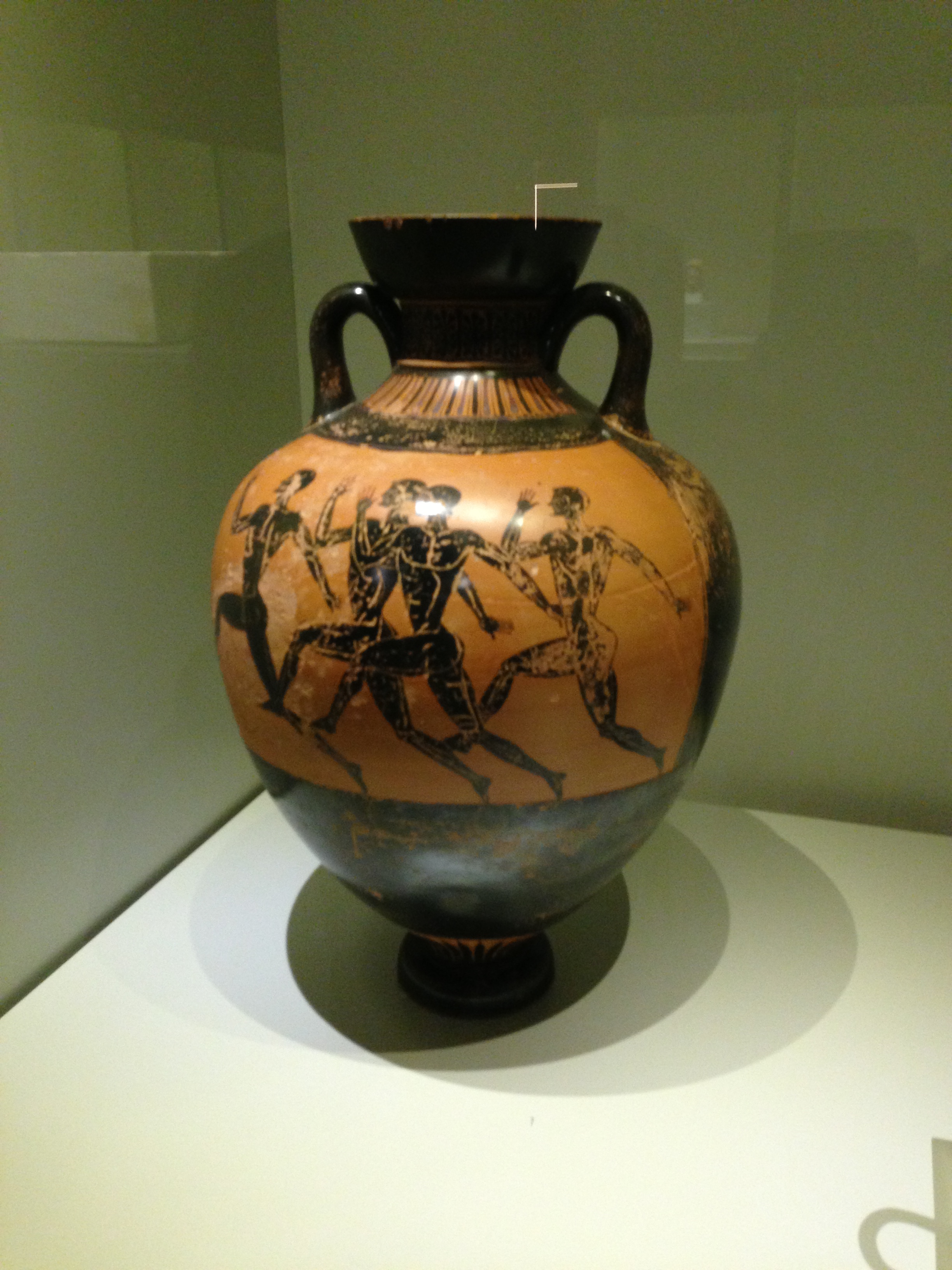They held a track meet Friday on a typically warm and balmy evening in Doha, the opening Diamond League event of the 2013 season. It was sensational. American long jumper Brittney Reese, the 2012 Olympic gold medalist, sailed out to a personal best, 7.25 meters, or 23 feet, 9 1/2 inches. It was the best jump by an American in 15 years.
Another London gold medalist, David Rudisha of Kenya, won again, in 1:43.87, considerably slower than his world-record 1:40.91 at the Games. That was to be expected for an early-season outing. Even so, he beat Mohammed Aman of Ethiopa -- who had beaten him last year in Zurich -- by more than half a second.
In the women's 400, Amantle Montsho of Botswana defeated Allyson Felix in a rematch of their thrilling encounter at the 2011 world championships in Daegu, South Korea; Felix hadn't lost in Doha in 10 races but, then again, hadn't run the 400 in a meet since Daegu. Montsho crossed Friday night in 49.88, Felix in 50.19. Britain's Christine Ohuruogu, the London silver medalist, took third, in 50.53.
In all, there were 11 world-leading performances. More than two dozen Olympians made the meet.
The focus Friday in Doha was on track and field. Nothing else. It just goes to show -- again -- that when given a chance, the Qataris know how to put on a big-time sports event where the athletes are front and center.
It's a mystery why so much of the world -- still -- views what is going on in Doha with such suspicion.
It's as if having money is a bad thing.
Like, why?
That is stupid thinking and ought to stop.
This is not naiveté.
If there is evidence of misconduct or wrongdoing, then it should be produced, and examined for everyone to see.
If there is not, then what is at issue is stereotyping, or worse -- and that really needs to stop. Because, as Fahad Ebrahim Juma, the director of planning and development for the Qatar Olympic Committee said in a recent interview in Doha, "Believe it or not, the Middle East is part of this earth."
One day, there are going to be Olympic Games in the Middle East.
Maybe they will be in Istanbul in 2020. The International Olympic Committee is going to vote this September on the 2020 site; Istanbul is in the mix, along with Tokyo and Madrid.
If Istanbul doesn't make it, Doha -- which bid for 2016 and 2020 but was cut -- will surely bid for 2024. Maybe even if Istanbul does make it. Who knows?
Of course, Qatar will stage soccer's World Cup in 2022.
Again, if there is documentable evidence of misconduct or wrongdoing in the Qatari World Cup bid, bring it on.
Until then, here is some of the evidence of what is actually going on in Qatar:
The country is being developed, and rapidly, according to a "National Vision 2030" plan that includes sport as one of its key pillars.
Part of the strategy involves international outreach. In 1993, Qatar staged two international sports events. In 2002, 10. This year, 40. The 2020 objective, 50.
Next year, it will stage the world swimming short-course championships; in 2015, the world handball championships; in 2016, the road cycling championships.
The Qataris announced Friday they intend to bid for the 2019 world track and field championships; they tried for 2017 but lost to London.
Another element of the 2030 plan is an internal focus. An Olympic program in the country's schools drew 5,000 students in 2008 -- 1,500 girls and 3,500 boys. This year, roughly 21,900 students -- 7,555 girls, 14,345 boys.
At the London Games, Qatar sent women to the Games for the first time -- four. But it's not as if there aren't Qatari female athletes. More than 200 Qatari women competed at the 2006 Asian Games. The Qataris are, for the most part, trying to get their female athletes to the Games by qualifying them the way every other nation does, not just by accepting wild-card invitations in swimming and track.
The nation's flag-bearer at the opening ceremony in London: female shooter Bahiya al-Hamad.
Yes, you can see women in veils in Doha. But, this spring at the QMA Gallery at Katara, near the upscale West Bay development, you could also have taken in the "Hey Ya!" photo and video exhibit -- shots of Arabic women in swimsuits; gymnastics leotards; sports bras, shorts and track spikes; whatever.
You could also have taken in a production across town of the Greek tragedy, "Medea," put on by Northwestern University in Qatar. Northwestern is one of several leading institutions with branch campuses in Qatar -- others include Texas A&M, Carnegie Mellon, Virginia Commonwealth, Georgetown's foreign service school and Cornell's medical school.
You could have gone shopping at the Villagio mall. It has an ice rink in it. And a food court. And every shop-'til-you-drop outlet you can imagine. It's right next to the Aspire complex, with a 50,000-seat stadium and a sports-specific hospital. They put on the 2010 world indoor track and field championships at Aspire.
Or -- and this is where the Qataris got their latest round of bad press -- you could have taken in the "Olympics: Past and Present" Exhibit in a temporary hall close to the Museum of Islamic Art. The show will run there until June 30; it's due eventually to be housed in a Qatar Olympic and Sports Museum.
The exhibit, which opened in March, is split into two parts, one highlighting ancient Olympia, the other the modern Games. On display are some 1,200 items, including over 600 from Greece and international museums.
There's a mini-Olympic stadium. There are Olympic posters and mascots. There is every Olympic torch -- including the super hard-to-find Helsinki 1952 torch.
The display, put together by Dr. Christian Wacker, a German historian, is genuine. It is engaging. Most important, it doesn't skirt the truth -- it confronts the honest realities that, for instance, the Games have had boycotts and been shadowed by doping problems.
All that, and the one thing that the European press bothered to write about -- which then made the English-language wire services -- is some nude statues?
A compromise -- a fabric six feet in front of the statues -- didn't suit the Greek Culture Ministry. So the antiquities were a no-go, and reportedly shipped back to Athens, where it somehow became a story.
Why? Because cultural sensitivities in Doha are, on some level, different than in Athens? Who got together and decided that cultural standards in Athens make the world go around?
The controversy is all the more incredible given that this exhibit is -- again -- literally in the shadow of one of the world's finest exhibits of Islamic art.
Beyond which -- there is nudity in the exhibit, including a lovely small bronze.
Four Olympic champions, meanwhile, were among those touring the show on Wednesday: Felix, Reese, American triple-jumper Christian Taylor and Jamaican sprinter Shelly-Ann Fraser-Pryce.
It was normal.
Then they, and a bunch of other top athletes, went out Friday night and ran. Normal.
"I love racing in Doha," said Kellie Wells, the London bronze medalist in the women's 100 hurdles, who finished second Friday, behind London silver medalist Dawn Harper-Nelson.
Harper-Nelson ran a world-leading 12.6; Wells ran a season-best 12.73. "It's always great to run here," Wells said. "Every single time."






